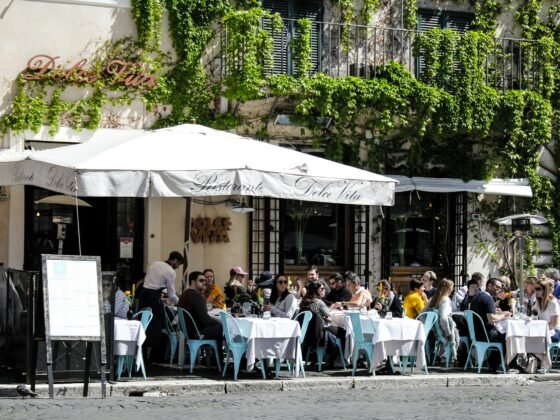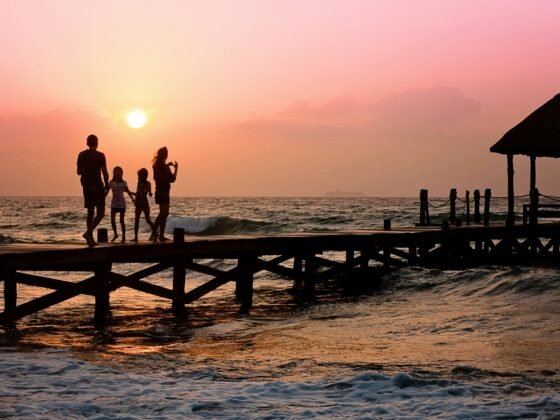
Foraging, the practice of searching for and collecting wild food has seen a remarkable resurgence in recent years. For people looking for new ways to connect with nature, foraging offers appealing options with healthy and sustainable foods. It is a great way to get outdoors and explore both local environments or foreign ones when abroad on holiday.
For beginners, it is a fascinating journey into the world of wild edibles, but it has to be accompanied by knowledge and caution. To embark on a safe and successful foraging adventure, it’s essential to start with the right resources. Some of the best foraging books can serve as invaluable guides, offering detailed information on plant identification, habitat, and edibility.
These books provide novice foragers with a foundation to recognize and harvest wild plants confidently. Remember to learn from local experts, attend workshops, and always cross-reference information to ensure accurate identification. Practicing responsible foraging, respecting ecosystems, and adhering to any regulations in your area are fundamental principles for both the safety of foragers and the preservation of the natural environment.
However, a lack of knowledge about plant identification, conservation, and safety protocols can quickly turn an enjoyable outdoor activity into a regrettable experience. This beginner’s guide covers everything you need to know to start foraging safely and successfully.
Understanding the Importance of Sustainable Foraging
Foraging has a long history of enabling human survival through the seasonal collection of wild foods. However, modern-day foraging differs greatly from historical practices. Today, overharvesting edible plants threatens vulnerable species and degrades delicate ecosystems that cannot keep pace with human demand. Sustainable foraging emphasizes leaving food behind, allowing plants and ecosystems to recover, and promoting fairness in foraging communities.
With the rise in popularity of alternative forms of food procurement, especially during times like the COVID-19 pandemic and amidst food price inflation, it’s crucial to be aware of the legal and ethical boundaries surrounding foraging. This ensures that we do so responsibly while we tap into nature’s bounty.
Recognizing Legal and Ethical Boundaries
Know your rights, but also forage with respect. Public parks and protected wilderness areas often prohibit harvesting plants, fruits, nuts, and mushrooms. Research specific regulations in your location. Additionally, be considerate of other foragers. Never take more than what you need, and do not harvest rare species. Follow the forager’s golden rule: Take half, leave half.
While the legal landscape can be a maze, especially with some U.S. cities considering food foraging illegal in conservation areas, the real challenge often lies in distinguishing between what’s safe to eat and what’s not. After all, the essence of foraging is not just about collecting but about understanding and identifying the right wild edibles.
Identifying Safe and Edible Plants
Using field guides and foraging with experts is key to confident identification. Look for:
- Distinct leaf shapes and arrangements
- Stem and stalk characteristics
- Unique flower/fruit structures
Here are some common edible/toxic lookalikes:
- Curled dock (edible) vs. poison hemlock (toxic)
- Wood sorrel (edible) vs. shamrock plant (toxic)
- Chicken/hen of the woods mushrooms (edible) vs. sulfur shelf mushrooms (toxic)
Take detailed notes and photographs to reinforce learning. And adhere to this crucial foraging rule: When in doubt, do not eat. Better safe than sorry.
The surge in foraging’s popularity, evident from the rise in foraging tours and educational classes, underscores the importance of not just identifying but also harvesting these wild edibles responsibly. It’s not just about what you pick, but how you pick it.
Adopting Responsible Harvesting Techniques
Responsible foraging includes harvesting in multiple locations to let plants regrow and conscious harvesting to avoid damaging plants. Here are some best practices:
- Harvest mushrooms by twisting gently to avoid pulling up underground mycelium networks. This is especially important for delicate mushrooms like morel mushrooms. Since morel mushrooms have a short shelf life, knowing how to store morel mushrooms properly is crucial.
- When collecting berries, avoid over-pruning branches. Prune strategically, above leaf nodes, to encourage regeneration.
- Harvest herbs and greens with sharp knives or scissors, making clean cuts an inch above the soil line.
- For roots, dig far enough from the plant stalk to avoid permanent damage. Cover holes afterward and scatter seeds to replenish the area.
- Bring reusable containers and bags to reduce waste. NEVER harvest endangered, threatened, or at-risk species.
Having adopted sustainable foraging practices that emphasize leaving food behind and allowing ecosystems to recover, it’s equally vital to ensure that the tools and equipment we use align with our commitment to the environment. After all, responsible foraging is as much about the technique as it is about the tools.
Helpful Resources for Foraging Beginners
Local plant field guides: Detailed books like Edible Wild Plants by John Kallas and Wild Edibles by Sergei Boutenko offer images, maps, and identification tips for edible and poisonous species in your region. These should be your go-to references when foraging.
Foraging courses: Hands-on instruction in plant identification, harvesting techniques, preparation methods, and more. Check local community colleges, nature centers, herb shops, and recreational programs for availability.
Foraging apps: Smartphone resources like Wild Edibles, PictureThis Plant Identifier, and Falling Fruit map edibles in your location. They also provide caution on toxic lookalikes.
Social media groups: Connect with and learn from experienced foragers online. Popular Facebook groups include Wild Food Foraging and Edible Plants. Subreddits like r/foraging are also great forums.
Sustainable foraging books: The Forager Chef’s Book of Flora by Alan Bergo and The Essential Guide to Foraging by Karen Monger offer wonderful primers on ethical harvesting. Reference these for foraging best practices.
Foraging gear: A pocket knife, gardening shears, reusable bags/containers, compass/GPS, and specialty field guides are essential items for safe foraging expeditions.
Frequently Asked Questions
How can I ensure that the plants I’m foraging are safe to eat?
Consult local plant field guides and forage with experienced mentors until you can confidently identify flora. When in doubt, do not eat unknown plants or fungi.
Are there any tools or resources that can assist beginners in foraging?
Foraging apps, plant identification books, foraging courses, and social media groups offer wonderful learning opportunities for beginners.
How can I differentiate between similar-looking edible and poisonous plants?
Careful observation, consulting field guides, and seeking expert input are essential to accurately distinguish edible plants from toxic look-alikes. When uncertain, avoid consumption.
What are some examples of easily identifiable edible plants?
Dandelion, chickweed, pine nuts, oyster mushrooms, and blackberries are some edibles with distinct characteristics that make them suitable for beginners.
What are some toxic plants I should avoid?
Avoid unknown mushrooms, hemlock, lantana, oleander, poison ivy, and any plants with clusters of three leaves, as these often contain toxins. When foraging fungi, steer clear of any that resemble the death cap mushroom.
Conclusion
Foraging offers a profound connection to nature and our ancestral foodways. However, inexperienced foragers can easily make mistakes that impact delicate ecosystems. Beginners should focus on proper plant identification, respect for nature, harvesting selectively and thoughtfully, and continuous education. With adequate knowledge and preparation, we can forage safely while also preserving the landscape’s integrity for generations to come.
Happy foraging!











